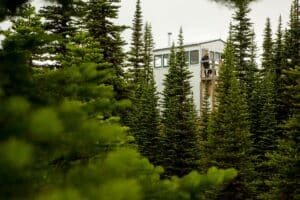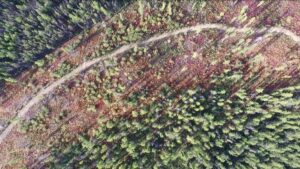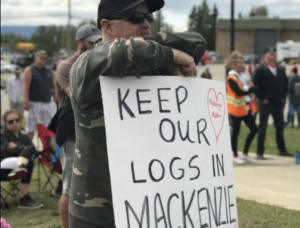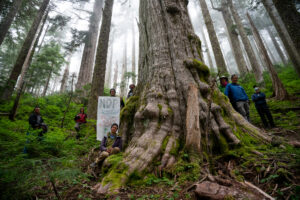Forestry
Keeping it Clean – Video
The forested watersheds of British Columbia’s Interior are a primary water source for aquatic ecosystems and human populations. The mountain pine beetle (MPB) infestation and associated salvage harvesting have the potential to affect the amount, timing, and quality of water originating from these watersheds. Watch the video on the MPB Hydrological Impacts and Watershed Management…
Read MoreStudy on Supply Chain and Community Benefits of the Forest Sector
A new economic study focusing on local communities across BC was released today by the BC Council of Forest Industries (COFI). This study highlights the vital role of British Columbia’s forestry industry, as it touches so many communities across the province and employs British Columbians in a wide array of jobs. In 2022, the forestry…
Read MoreFacing Fire: Building Resiliency to Wildfire | VIDEO
WILL WE MANAGE FIRE OR WILL FIRE MANAGE US? The question isn’t if fire will happen, but rather when it will strike. Fire is an intrinsic part of our ecosystem’s evolution. For over a century, we’ve believed we knew the best way to tackle wildfire in North America. The mindset that “the only good wildfire…
Read MoreWildfire Risk Reduction and Enhanced Fibre Utilization Project Funding
FESBC Welcomes Applications for Wildfire Risk Reduction and Enhanced Fibre Utilization Project Funding Kamloops, B.C. – The Forest Enhancement Society of BC (FESBC) continues to accept applications to fund forest enhancement projects, year-round. In the Provincial Government’s Budget 2024, FESBC was entrusted with $60 million in funding; $20 million to be allocated each year over…
Read MoreRural Economic Diversification and Infrastructure Program (REDIP)
Program Details The Rural Economic Diversification and Infrastructure Program (REDIP) is a new grant launched by the Ministry of Jobs, Economic Development and Innovation (JEDI). The Government of B.C. is investing up to $33 million this year to create the Rural Economic Diversification and Infrastructure Program, which will support projects that promote the following: Economic diversification…
Read More20 Years of Fallout in the Forestry Sector
More than 20 years ago, a tiny insect changed B.C.’s forestry future. The fallout is still happening Job losses being seen across the province have been predicted for more than a decade, industry leaders say No one is surprised by the news of Canfor shutting down one of its pulp mills in Prince George. Not…
Read MoreIncreased Opportunities for Indigenous People in Forest Sector
Indigenous people looking to work in B.C.’s forest sector will have more opportunities to learn, train and develop in-demand skills through two new provincial grants. Supported by the StrongerBC Economic Plan, the Province is providing funding to the First Nations Forestry Council (FNFC) for the Indigenous Forestry Scholarship Program (IFSP) and an online forestry careers-matching tool…
Read MoreProposed Sale of Forest Tenure to B.C. First Nations Offers Hope to Hard-Hit Forestry Town
Canfor also agreed to sell Mackenzie site, plant and equipment to wood product company Peak Renewables Residents of Mackenzie, B.C., have long had complaints about seeing their timber supply shipped elsewhere, costing jobs. A new deal between Canfor and local First Nations may change that. (Nicole Oud/CBC) Forestry company Canfor Corp. has signed a letter of…
Read MoreFairy Creek blockades must go, B.C. Supreme Court rules
After eight months of camping out to protect old-growth forests from logging, Fairy Creek activists have been told their blockades must go. In its decision Thursday morning, the B.C. Supreme Court stated logging activities by Teal Jones Group are completely legal, and by denying access to cutblocks, activists are in fact the ones engaging in…
Read MoreCommon Interests, Common Purpose
Splatsin First Nation councillor George William and Lumby mayor Kevin Acton discuss how their respective communities came together to create the Monashee Community Forest — and in the process began to build a greater awareness of the similarities between the First Nation and village, and explore further opportunities for mutually beneficial cooperation and collaboration.
Read More









